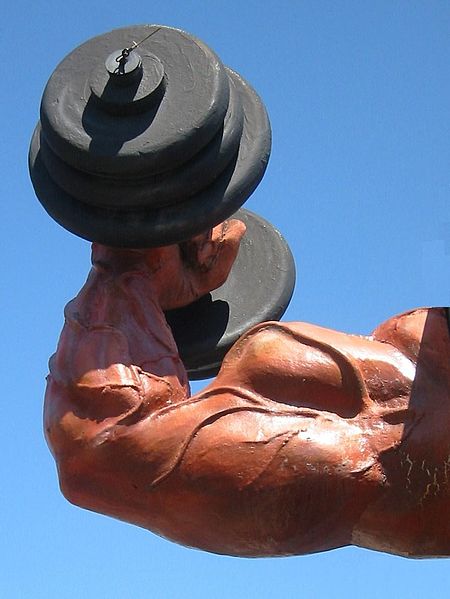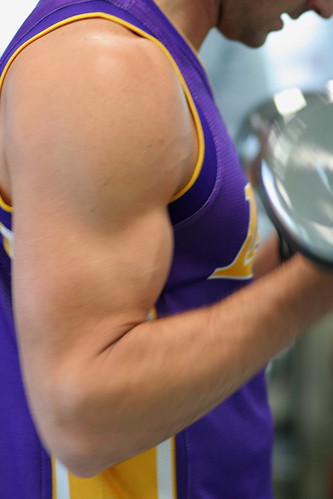Forearm Exercises are an essential aspect of preventing carpal tunnel syndrome. If you’re not a gym buff, it’s okay. Look at it this way, you’ll be preventing a common problem and gaining some strength you otherwise wouldn’t have had. It doesn’t take much not only to have strong forearms and strong wrists, but also to have the very strong-looking arms that bodybuilders and regular gym goers get. Here are a few important exercises that will keep your forearms in shape and make them even better.
What’s important about all these exercises is to never swing your arms but to gently and gradually lift the weights you’re using. All these exercises use dumbbells, but other equipment like barbells can be used for similar workout techniques. Always slowly lower the weight back into the starting position.
1. Dumbbell Wrist Curls with a Bench
This move should use a very light weight to start off. Even if you work out and lift regularly, if this is new then the risk of strain is large. Start off with a low weight and work your way up as the weeks go by.
Kneel down by a flat surface and grab the dumbbell underhanded and your forearm flat on the bench. Raise the weight with as much emphasis only on your forearm as possible, lifting it as high or far as you can. As the lift continues, stabilize your hold by squeezing or tensing your forearm muscles. As with all these exercises, slowly relax and slowly move the weight back to the starting position on the bench. Repeat as often as you need to for your personal routine or a minimum amount of times if you are just getting used to this as a new exercise.
2. Dumbbell Reverse Curl
While standing up straight and keeping your feet shoulders-length apart, grab your weights in an overhand style and hold them with your arms extended down and the weights resting against your legs. Then lift. This is the big innovation of this move, and works the forearms in a different way than the common underhand curls most people are used to. Curl them as high as possible with your shoulders positioned back and elbows in a fixed, tight position.
3. Reverse Concentration Curl
This move also uses an overhand grab on the weight but requires you to sit and bend over to execute the motion. Sitting down with your feet resting further apart than your shoulders, give yourself plenty of room in front of you between your legs to do the lift and drop. Rest the back of the upper part of the lifting arm against its respective thigh (left on left or right on right). Start curling your fully extended lifting arm inward in reverse (your backhand facing you). Once you’ve lifted it as high as you can, squeeze your forearm and begin to lower again.
4. Neutral Dumbbell Curl
This one uses a neutral grip, what you might call a sideways grip compared to the usual way people lift dumbbells or the reverse curls we showed you above. This is also a sitting exercise, but doesn’t work your biceps. Here, supporting your arm resting against your tight and the wrist hanging over the knee, the object is to gently lift and lower the weight using essentially only the wrist. Again, tense up your forearm muscles once you’ve lifted the weight as high as possible.
For a visual of this exercise, check out MuscleandStrength.com






B O O K M A R K E D! I’ll take note on this BIG TIME! Thanks for sharing… Two thumbs up!:D
http://ahsecrets.com
Hey, I like your site and its good to promote
my new site: http://carpaltunnelexposed.com/
If you are interested in make money promoting
this site, please contact me!
Wrist discomfort normally occurs due to repetitive strain injury when the nerve origins are infringed in a narrow channel. Learn more about this syndrome on this page https://nydnrehab.com/what-we-treat/wrist-pain/carpaltunnel/.